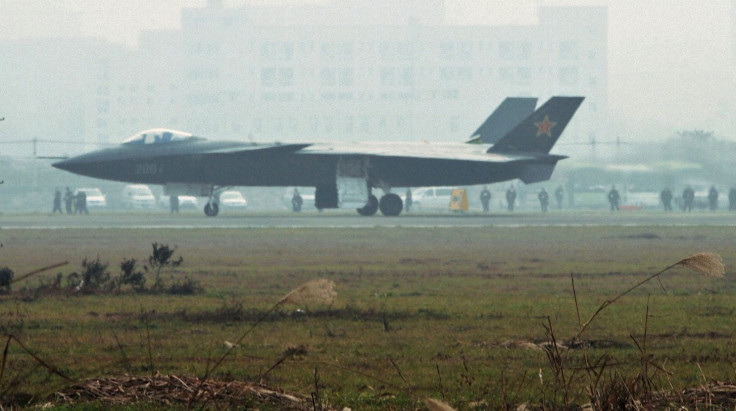China's New Anti-Stealth Radar Material: Technology Could Make Jets, Ships Harder To Detect

Chinese scientists have created a special material that could make stealth jets and ships even harder to detect by using current anti-stealth radar. While stealth materials already exist that effectively can absorb most of the specialized microwaves that are fired into the sky by radars to detect aircraft, it has always been too thick and heavy for modern jets to carry, a report published Thursday in the Journal of Applied Physics said.
Now, scientists in China have developed a far thinner and lighter stealth material. “Our proposed absorber is almost 10 times thinner than conventional ones,” Wenhua Xu, one of the team members from China’s Huazhong University of Science and Technology, said in the report.
The new technology demonstrates how China is rapidly catching up in an area of defense the U.S. traditionally has dominated.
It’s not yet clear if the Chinese military has adopted the technology on its two stealth jets already in production, the Chengdu J-20 and the Shenyang J-31, or if it will attempt to advance the technology in the future to be even more effective.
Chinese Scientists Unveil New Stealth Material Breakthrough https://t.co/7w9DbU2lXG pic.twitter.com/Hbnk4pi4lN
— Defense One (@DefenseOne) November 12, 2015If it does, the capability of the Chinese military in the air and at sea will be increased dramatically and help close the technology gap between Beijing and the Pentagon. It could be argued that varying degrees of stealth technology enabled the U.S. military to dominate in the last century, stopping most technological gains by its Soviet enemy during that time.
“In the 1970s, Secretary of Defense Harold Brown, working closely with Undersecretary -- and future Defense Secretary -- Bill Perry, shepherded their own offset strategy, establishing the Long-Range Research and Development Planning Program that helped develop and field revolutionary new systems, such as extended-range precision-guided munitions, stealth aircraft, and new intelligence, surveillance, and reconnaissance platforms,” former Defense Secretary Chuck Hagel said at a November 2014 event outlining the Pentagon’s newest technological push.
The result of the offset strategy was the Lockheed Martin F-35, long touted as the stealthiest fighter in production. However, in 2009, China was reported to have hacked into U.S. defense computers and stolen design and electronic data on the program, Reuters reported. While China denied the hack, both its most recent jets look nearly identical to the F-35.
© Copyright IBTimes 2024. All rights reserved.






















